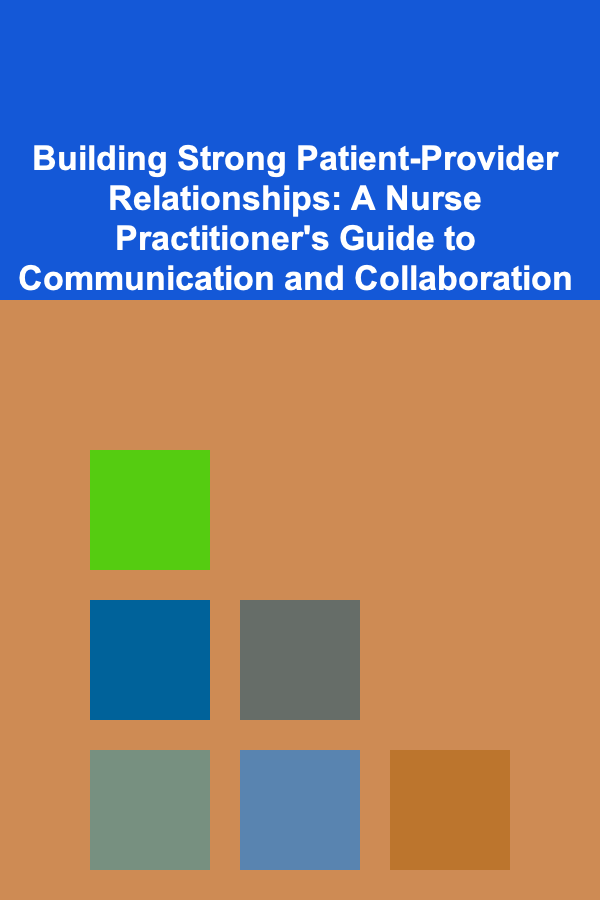
How To Practice Loving Detachment
ebook include PDF & Audio bundle (Micro Guide)
$12.99$9.99
Limited Time Offer! Order within the next:

Loving detachment is a concept that, while often misunderstood, can be incredibly transformative in personal relationships, self-development, and emotional well-being. It involves learning to care deeply and fully for someone or something, but without becoming overly attached to the outcomes or the need for control. It's the art of engaging with others in a healthy, non-possessive way, where you maintain your own emotional balance and boundaries, while still offering support, compassion, and love.
This article delves into the practice of loving detachment, explaining its principles, benefits, and how to incorporate it into your daily life.
Understanding Loving Detachment
At its core, loving detachment is the balance between caring for others and maintaining your own inner peace. It is about having compassion without becoming entangled in others' emotions or problems. In essence, it means loving someone without the expectation of them changing or meeting your needs.
Unlike detachment, which can often be cold or distant, loving detachment involves being emotionally present while simultaneously recognizing that you are not responsible for another person's emotions, decisions, or actions. It's about providing love and support without losing yourself in the process.
Key Elements of Loving Detachment:
- Non-Possessiveness: Loving detachment means you don't try to control, change, or possess the other person. You accept them for who they are, and let them live their life according to their own choices.
- Healthy Boundaries: Setting clear, healthy boundaries is crucial in practicing loving detachment. It ensures that you protect your emotional well-being while still being available for the other person.
- Emotional Independence: Loving detachment requires emotional independence. You maintain your own emotional stability, regardless of the other person's feelings or actions.
- Compassion without Attachment: You can still offer love, care, and support, but you do so without demanding that the other person responds in a specific way or fulfills your needs.
- Acceptance of Imperfection: Loving detachment involves accepting that people are not perfect and that their choices are their own. It's about allowing space for the other person's growth and learning, without trying to shape them into what you want them to be.
Why Loving Detachment is Important
The practice of loving detachment can have profound effects on your relationships, mental health, and overall life satisfaction. Below are some of the primary reasons why it is a valuable skill to develop:
1. Promotes Emotional Balance
When you practice loving detachment, you avoid getting caught up in emotional dramas or roller coasters. You learn to stay grounded and balanced, regardless of external circumstances. This emotional stability allows you to approach relationships from a place of inner peace and clarity, which makes it easier to offer genuine love and support.
2. Protects Your Mental and Emotional Health
Over-attachment to someone else's emotions can lead to stress, anxiety, and emotional exhaustion. Loving detachment allows you to care deeply for others without absorbing their pain, negativity, or turmoil. It provides a protective boundary that helps preserve your mental and emotional well-being.
3. Fosters Healthy Relationships
When you let go of the need to control or fix others, your relationships become more balanced and respectful. Loving detachment encourages mutual respect, where both parties can be themselves without fear of judgment or manipulation. It also allows you to be more present, compassionate, and supportive, rather than feeling drained or overwhelmed by the other person's emotions.
4. Enhances Self-Growth and Self-Love
Loving detachment helps you prioritize your own needs, goals, and personal growth. By detaching from unhealthy emotional dependencies or codependent behaviors, you can focus on becoming the best version of yourself. This increased self-awareness and self-love lead to healthier relationships with both yourself and others.
5. Encourages Freedom and Autonomy
Loving detachment promotes the idea that each individual is responsible for their own happiness and well-being. By not taking on the responsibility for someone else's emotional or mental state, you create space for them to make their own decisions, learn from their mistakes, and grow as individuals.
How to Practice Loving Detachment
Now that we've explored the principles and benefits of loving detachment, let's look at some practical ways to incorporate this practice into your life. Below are actionable steps to help you cultivate this skill.
1. Know and Respect Your Boundaries
The first step in practicing loving detachment is setting and respecting your own boundaries. This means knowing what you are and aren't willing to tolerate in your relationships, as well as what you need to maintain your emotional well-being. Boundaries can be physical, emotional, or mental, but they are all essential for ensuring that you don't get caught up in others' problems.
- Identify Your Limits: Reflect on past experiences where you felt overwhelmed or drained by someone else's emotions. Identify what boundaries were crossed and what you need to do differently moving forward.
- Communicate Your Boundaries Clearly: Let others know where you stand in a respectful and assertive manner. You don't have to justify or explain your boundaries; simply express them and stand firm.
- Respect Others' Boundaries: Practicing loving detachment also means respecting other people's boundaries. Understand that their needs and limits are just as important as yours.
2. Practice Self-Awareness
Loving detachment begins with self-awareness. You need to understand your own emotional needs, triggers, and patterns of attachment in order to detach with love and compassion. By cultivating mindfulness, you can become more conscious of your reactions and responses to others.
- Check In with Yourself Regularly: Take moments throughout the day to check in with your emotions. Ask yourself how you're feeling and why. This helps you stay attuned to your emotional state and prevent becoming overwhelmed.
- Recognize Codependent Patterns: If you find yourself excessively worrying about others' problems or trying to fix their issues, it may be a sign of codependency. Acknowledging these patterns can help you let go of unhealthy attachment behaviors.
3. Detach with Compassion
Detaching doesn't mean shutting yourself off from others. It means you can care deeply while still maintaining emotional distance. Practice loving detachment by offering compassion without getting emotionally entangled in the other person's feelings or problems.
- Empathize Without Taking on Their Emotions: You can offer empathy and support, but it's important to remember that their emotions are not your responsibility. You can hold space for them without absorbing their pain or stress.
- Offer Help, But Don't Over-Rescue: It's natural to want to help others, but it's essential not to overstep or try to control the situation. Offer help when it's appropriate, but allow others to take ownership of their own journey.
4. Let Go of Expectations
A major part of loving detachment is letting go of expectations. When you have expectations about how someone should behave or respond, you set yourself up for disappointment and frustration. Instead, practice accepting others as they are and embrace the uncertainty of their decisions.
- Release the Need to Control: Trust that others are capable of making their own decisions, even if they don't align with your desires or preferences. By relinquishing control, you create space for freedom and growth.
- Accept Uncertainty: Accept that relationships can be messy, imperfect, and unpredictable. Let go of the need for certainty, and allow things to unfold naturally.
5. Focus on Your Own Growth and Well-Being
Loving detachment requires that you prioritize your own emotional health and growth. When you take care of yourself, you are better equipped to offer love and support to others without becoming depleted.
- Practice Self-Care: Make self-care a priority by engaging in activities that nourish your mind, body, and soul. Regular exercise, meditation, journaling, and hobbies can all contribute to your overall well-being.
- Pursue Your Own Goals: Stay focused on your personal development and passions. When you are fulfilled and focused on your own growth, it becomes easier to practice loving detachment with others.
6. Seek Support and Guidance
Practicing loving detachment can be challenging, especially if you are accustomed to codependency or enmeshment in relationships. Don't hesitate to seek guidance from a therapist, counselor, or support group if needed. Having an external perspective can help you gain insight and tools for detaching with love.
- Therapy or Counseling: A mental health professional can help you work through any emotional or psychological barriers that prevent you from practicing loving detachment.
- Support Groups: Joining a support group can help you connect with others who are also learning to practice detachment in their relationships.
7. Embrace the Practice as a Journey
Loving detachment is not a one-time fix, but a continuous practice that evolves over time. Be patient with yourself and acknowledge that it takes time to break old patterns and develop new ones. Embrace the process as a journey, not a destination.
- Celebrate Small Wins: Recognize when you successfully practice loving detachment, even in small moments. These victories will encourage you to continue on the path.
- Learn from Challenges: Expect setbacks and challenges along the way. View them as learning opportunities that help you refine your practice of loving detachment.
Conclusion
Loving detachment is an essential skill for building healthy, fulfilling relationships while maintaining your own emotional well-being. It requires understanding your boundaries, practicing self-awareness, and offering love and support without becoming emotionally entangled. By practicing loving detachment, you can experience deeper connections with others, while also preserving your inner peace and autonomy. Remember that detachment doesn't mean a lack of care; rather, it is a way of loving with balance, freedom, and respect.

Building Strong Patient-Provider Relationships: A Nurse Practitioner's Guide to Communication and Collaboration
Read More
How to Build a Checklist for Preventive Car Maintenance
Read More
How To Understand Acoustic 3D Printing
Read More
Selecting the Best Blind Cleaner for Venetian Blinds: A Comprehensive Guide
Read More
How to Research the Life of Queen Boudica: A Deep Dive
Read More
10 Tips for Planning Food Videography: Lighting & Styling
Read MoreOther Products

Building Strong Patient-Provider Relationships: A Nurse Practitioner's Guide to Communication and Collaboration
Read More
How to Build a Checklist for Preventive Car Maintenance
Read More
How To Understand Acoustic 3D Printing
Read More
Selecting the Best Blind Cleaner for Venetian Blinds: A Comprehensive Guide
Read More
How to Research the Life of Queen Boudica: A Deep Dive
Read More